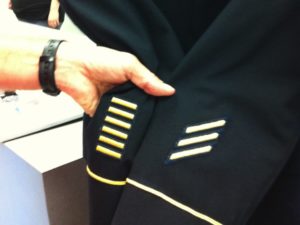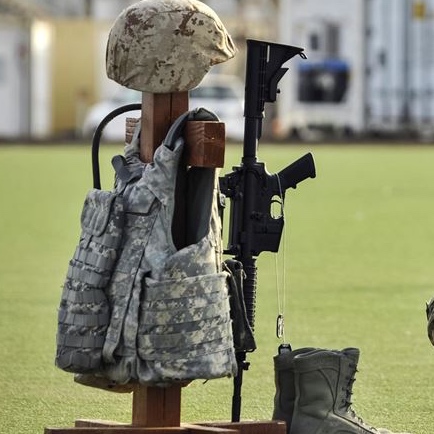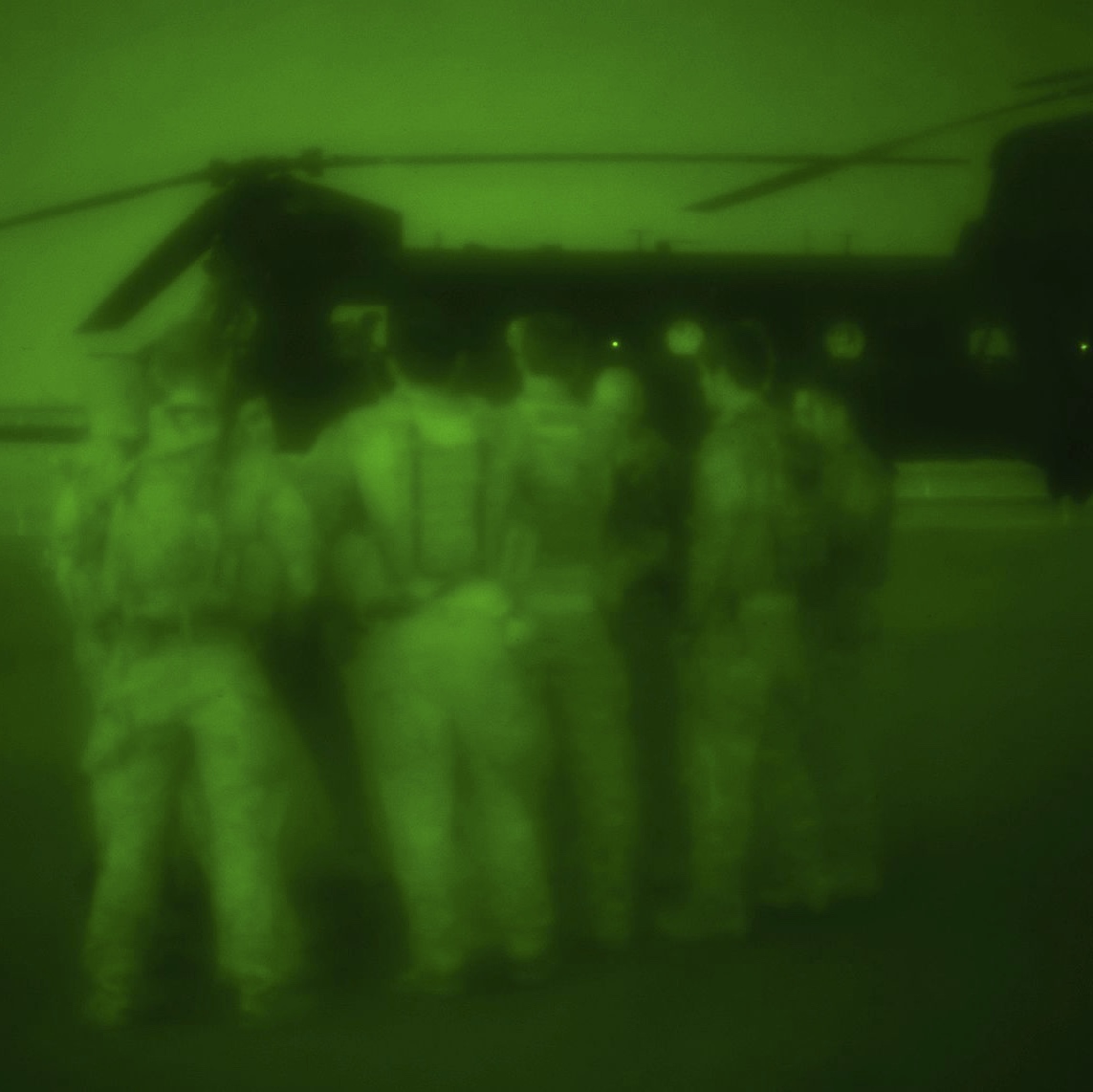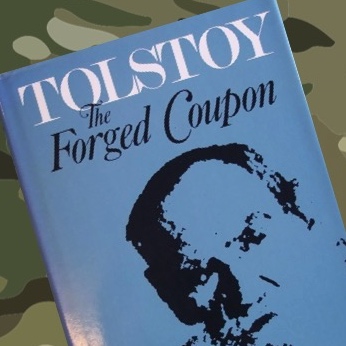
Photo credit: Casey Fogle, used by permission
On the Army Dress Uniform, there are a series of hash marks on one sleeve that indicate how long the Soldier has been in the service, and hash marks on the other sleeve that indicates how long the Soldier served overseas in a combat zone. The Army, in it’s neverending quest to be euphemistic, call these hash marks “overseas service bars.” Veterans, in their neverending quest to call it like it is with no BS, call them “combat stripes.”
Recently, I had the pleasure of spending some time with an old Army buddy, one of the Section Sergeants that served with me when I was a Platoon Sergeant in Afghanistan. He works far from the mountains of Afghanistan now, somewhere in the vast military-governmental complex that is Washington, D. C. He was telling me of an experience when he had the occasion to wear his dress uniform to work one day. He works in a multi-service location that includes many civilian workers, and some of them asked him “what all those stripes meant.” He explained to them the difference between the service stripes and the combat stripes, but then he said he told them something that struck me: it’s not the number of combat stripes that count, but the spaces between them.
You see, each combat stripe represents six months of overseas service. For each of the services, the tours are different lengths, and even within the services tour lengths vary based on the military specialty. In general, Army combat tours were twelve months long in the beginning of Iraq and Afghanistan, fifteen months between 2007 and 2009, and nine months later in the conflicts. Therefore, if a veteran participated in one 15 month tour, one 12 month tour, and one 9 month tour, then those three years of combat service would be represented by six combat stripes. That’s a lot of stuff to be represented by six bits of cloth.
The thing is, as my friend so insightfully pointed out, the space between those stripes wasn’t a cakewalk, either. The time between combat tours, especially during the height of the conflicts, was taken up by an immense amount of time away from the family. Field Training Exercises, trips to the National Training Center, trips to the Joint Readiness Training Center, temporary duty assignments, schools, any number of things that needed to happen to help the Soldier prepare for the next deployment while also maintaining career progression.
In some sense, the combat time is easy; we know where everything is, whether on a huge base or our small outpost. We know when the chow hall opens, we know the best latrine to go to; after learning the routine, we are pretty familiar with it. There are thousands of service members deployed with us, each responsible for their own job. I didn’t have to gather my own intelligence on the routes we were using to provide security escort, I didn’t have to make sure the generator was working properly to supply power to our command center. Not to oversimplify or diminish the danger that was often present, but my platoon and I had a job to do and the others around us had a job that they did, and we trusted it to happen.
Fast forward to the space between those stripes. All of a sudden, we are back in the “real world,” dealing with chaotic and unpredictable lives. Those of us who were married: grocery shopping, parent teacher conferences, paying the bills. Those of us who were not married: avoiding the details that always seemed to be given to the Single Soldiers, perhaps looking for someone who would be willing to go grocery shopping with us, and create the opportunity for future parent teacher conferences. On top of this whipsaw of obligations is the memory of what happened during the last combat stripe, and knowing that the next combat stripe is not that far away.
The space between the stripes is significant for the families, not just for the spouses and children but for the parents of the service members as well. The space is filled with joy, and uncertainty, and confusion. Deployments change service members. It’s not always bad change, and it’s certainly not always good change, but it is change from what was before. That takes some adjustment, and so the family who is also getting used to the idea that the last stripe has been completed is getting used to the idea that the next one is coming up pretty quick.
Consider the space before and after the stripes. You can pack a lot of growing up in the stripes between those two spaces, a lifetime of experience that was significant and often challenging. Even if we weren’t six or eight or ten years older than the person we were before we started earning them, the experiences impacted us in such a way that we change. Anyone can recognize that they are not the same person as their eighteen-year-old self…add experience in combat to that mix, and you increase that change exponentially.
If you’re not a veteran, but know of some, take some time this Memorial Day to hear their stories. Maybe they don’t want to talk about it…if that’s the case, they’ll let you know. If you have a veteran in your life who you know served overseas, it’s likely that they lost someone in combat, and that is a burden that lingers between the stripes and carries on long after the last stripe has been sewn.
For veterans, take this time to remember your fallen brothers and sisters. Remember their lives, as messy and complicated and hilarious as they were, just as you remember their sacrifice. If the end is the only thing that is in focus, you are robbing yourself of the pleasure of remembering the good times, just as you are robbing your brother and sister of the true celebration of their life. I believe that I owe it to those who sacrificed to live well, rather than to fade away living a dysfunctional existence, and all veterans have the ability to make the choice of which one we decide to do.
What stories do the spaces between your stripes tell? I’d love to hear them so that we can share and honor the service and sacrifice that those spaces, and the stripes, represent.
Postscript: While searching for pictures I found the picture used at the beginning of this post. In a rare twist of fate, I was able to locate the originator of the picture, Casey Fogle, who posted the original picture along with her blog…which also, by amazing coincidence, used the phrase “The stripes tell a story.” I want to thank Casey for her graciousness and generosity in allowing me to continue to use the photo, and the phrase. As the spouse of a veteran who provided 25 years to this great nation, she certainly knows the meaning of the sacrifice, the stripes, and the space between them. You can read more of her thoughts at her current blog here.




3 Comments
The Other Side of the Stripes: The Spouse of the Military Service Member · April 10, 2017 at 10:16 pm
[…] year on my main blog, I wrote an article called “The Stripes Tell a Story…but Not the Whole Story.” The basic premise was that, on any service member’s uniform, there are stripes and insignia […]
The Other Side of the Stripes: The Spouse of the Military Service Member – Head Space and Timing · April 18, 2017 at 4:23 am
[…] 2016, I wrote an article called “The Stripes Tell a Story…but Not the Whole Story.” The basic premise was that, on any service member’s uniform, there are stripes and insignia […]
HST 009: The Stripes Tell a Story with Bryan Alexander — Head Space and Timing · August 29, 2017 at 11:07 am
[…] The Stripes Tell a Story…but Not the Whole Story […]
Comments are closed.